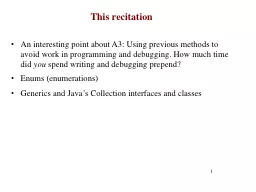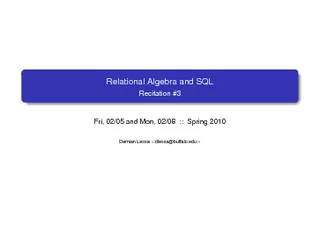PPT-This recitation
Author : sherrill-nordquist | Published Date : 2016-07-17
1 An interesting point about A3 Using previous methods to avoid work in programming and debugging How much time did you spend writing and debugging prepend Enums
Presentation Embed Code
Download Presentation
Download Presentation The PPT/PDF document "This recitation" is the property of its rightful owner. Permission is granted to download and print the materials on this website for personal, non-commercial use only, and to display it on your personal computer provided you do not modify the materials and that you retain all copyright notices contained in the materials. By downloading content from our website, you accept the terms of this agreement.
This recitation: Transcript
Download Rules Of Document
"This recitation"The content belongs to its owner. You may download and print it for personal use, without modification, and keep all copyright notices. By downloading, you agree to these terms.
Related Documents














